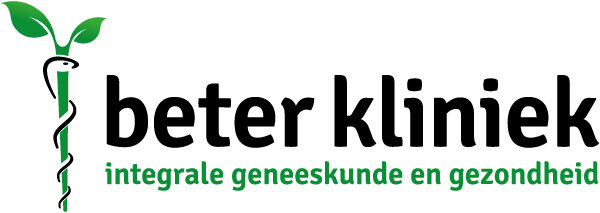Conventional treatment for chronic pain often involves the use of, over-the-counter or prescription, medications. Two commonly known side effects of long-term medication use are the danger of addiction and gastrointestinal bleeding. The number of annual deaths resulting from both gastrointestinal bleeding and opioid (long-taken painkillers) prescriptions used to manage pain is alarming.
Dr. Pawluk is the noted magnetic field therapy expert at Townsend Letter.
Townsend Letter, researcher of alternative medicine, publishes a print magazine about it. It is written by researchers, health professionals and patients.
In the November issue of this journal, he shares extensive research and references for using PEMFs to treat chronic pain. When Dr. Pawluk was active in hospital care, he saw firsthand the damage painkillers could do. He began his search for a natural, effective approach. Alternatives such as nutrition, supplements, emotional/cognitive approaches and acupuncture treatments were not adequately addressing glaring pain problems. PEMF therapy is a groundbreaking treatment that fills the gap in pain management, both in clinical settings and in home use.
PEMF therapy does more than just relieve symptoms. PEMFs also address the underlying causes of pain, including inflammation, which is a major factor in causing pain. Paying attention to what is causing the pain is essential in finding lasting solutions and possibly healing the dysfunction.
PAIN AND PEMFS
Research has shown PEMFs to be effective in numerous pain-related conditions (Pawluk, 2017), including, but not limited to: abdominal pain, arthritis, bursitis (bursitis), carpal tunnel syndrome, cervical disc injuries (neck and neck), fibromyalgia, fractures, muscle spasms, nerve pain, peripheral neuropathy (nerve damage), phantom pain, plantar fasciitis(inflammation of the underside of the foot sole), PMS, postoperative pain, sinus pain, sprains and strains and pain caused by trauma.
Because chronic pain is such a widespread problem, affecting at least 116 million American adults, treatments that provide real relief and lasting solutions are essential.
PEMFs are a safe, low-intensity, highly effective treatment for chronic pain. This therapy does not carry the risk of side effects and complications that can accompany surgical procedures and medications.
PEMFs alongside other therapies can promote faster healing and relief. These mechanisms include the reduction of
inflammation, edema and muscle spasms/contractions; enhanced tissue repair; and natural antinociception.
Animal studies have shown that PEMFs also reduce pain perception in the brain.
PEMFs have both direct and indirect effects on pain perception. They affect the "firing" of neurons, the movement of calcium ions, membrane potentials, endorphins, dopamine, nitric oxide and nerve regeneration (repair). Indirectly, PMFs can improve blood circulation, cellular metabolism, cell oxygenation and prostaglandins (Jerabek and Pawluk, 1996).
When used with analgesics, PEMF therapy may reduce dependence on these medications in managing pain. A study that used very high-frequency PEMFs to treat cervical dorsal root ganglion pain (Van Zundert et al., 2007) showed that the need for pain medication was still significantly reduced in the active group after 6 months.
PEMFS AND MUSCULOSKELETAL DISORDERS
The vast majority of pain commonly treated with PEMFs comes from musculoskeletal (musculoskeletal) conditions, such as arthritis, tendonitis, sprains and strains, fractures, osteoporosis, hip disorders, muscle spasms, spinal cord injury and trauma, among others.
A wide range of research has shown that PEMFs have an impressive success rate in treating pain due to these conditions. One orthopedic practice documented reduced pain in 240 patient cases (Schroter, 1976) with a clinical success rate of nearly 80%.
Back pain caused by conditions such as spinal stenosis and arthritis of the back are often chronic, lifelong conditions that gradually worsen. PEMF has been shown to provide relief from these and other chronic conditions that result in back pain, even after other modalities have failed to do so.
Research demonstrating the effectiveness of PEMF therapy has also been conducted for many other musculoskeletal conditions, including lumbar osteoarthritis, failed back syndrome resulting from surgery, lumbar radiculopathy and osteoporosis. Dr. Pawluk's book Power Tools for Health describes this research and provides an extensive bibliography of more than 500 references.
NEUROPATHIES
Neuropathy is damage to nerves outside the brain and spinal cord (the peripheral nervous system) that causes weakness, tingling and pain. Diabetic neuropathy is the most common, but there are many other forms of neuropathy.
A study that used PEMF therapy for at least 12 minutes a day to treat patients with intense diabetic neuropathy symptoms showed that pain improved, paresthesia and tremor sensations were reduced and muscle strength increased in 85% of patients compared to control groups. (Cieslar, Sieron, & Radelli, 1995).
Studies have shown similar improvements in pain and other symptoms for other neuropathies, such as carpal tunnel syndrome and complex regional pain syndrome (CRPS).
PEMFS FOR COMPLEX CONDITIONS AND CENTRALIZED PAIN
The source of many pain conditions can be complicated and multifaceted, making treatment difficult. Research on many of these conditions has shown that PEMFs can be effective where other treatments are not. For example, a study of patients with headaches resistant to medication or acupuncture showed that PEMF therapy applied 20 minutes a day for 15 days provided relief for 60% of those with classic migraines, 68% of those with cervical migraines and 88% of those with tension headaches (Prusinski, Wielka, & Durko, 1987).
Fibromyalgia results in hypersensitivity to pain due to abnormalities in central brain structures that process pain sensations, reduced ability to activate natural pain inhibition and/or altered CNS processing of pain signals. Studies show that PEMF therapy significantly improved pain,
depression and anxiety and general functioning in individuals with fibromyalgia, and results remained positive even several weeks after treatment. Centralized pain is pain that is amplified in the brain, rather than just at its original source. Many chronic pain conditions result fairly quickly in centralized pain due to faulty pain signals. Treatment of both the localized source of pain and the brain can produce positive results more quickly and effectively. Identifying the source of pain can be tricky when pain signals are crossed, so a combination approach of localized treatment and treatment along the spine or to the brain may yield the best pain management results.
THE VALUE OF PEMF SYSTEMS FOR PAIN MANAGEMENT
The best PEMF system for pain depends on the problem to be treated. Low-intensity PEMF systems require longer treatment courses and some conditions require high intensities to reach the source of pain deep inside the body. Even after symptoms are gone, continued treatment can help heal the source of the problems so they do not return.
Frequencies and intensities are another consideration and each device is designed with specific frequencies and intensities. Many devices available for clinical and home use are extremely low-frequency devices ranging from 3 to 1000 Hz. These include known frequencies of delta (1-4 Hz), theta (5-8 Hz), alpha (9-13 Hz), beta (14-25 Hz) and gamma (26-100 Hz).
The intensity of therapeutic PEMF devices ranges from 0.1 mT (1 gauss) to 800 mT (8,000 gauss). In contrast, a standard MRI unit is 1,000 to 2,000 mT (10,000 to 20,000 gauss) or 1 - 2 Tesla. Repetitive transcranial magnetic stimulation (rTMS) units offered in hospitals and psychiatric practices typically have a strength of 800 mT (8,000 gauss). Although some conditions require high intensity to be most effective, even very low intensity PEMFs can still affect the perception of pain. Neuroimaging research has revealed changes in specific parts of the brain with pain stimuli altered by low-intensity PEMF exposure (Robertson et al., 2010).
When selecting a tool for clinical use, practitioners should consider the intensity needed to treat the specific conditions they are targeting. Clinical PEMF therapy is highly relevant to treated conditions in the fields of chiropractic, physical therapy, acupuncture, biofeedback, naturopathy and psychology, as well as orthopedics, physical medicine, pain medicine, neurosurgery, psychiatry and the growing fields of integrative and functional medicine.
For home use, PEMF devices are a solid health investment for people suffering from chronic pain. Owning a device allows for convenient treatment; some can even be used overnight. Devices are relatively affordable, especially when the cost of repeated visits to a clinic is considered.
And because PEMFs are effective for so many indications, the entire family can benefit from purchasing a PEMF device.
REFERENCES
Full references are available at
www.DrPawluk.com for all the quotes that appear in the article.
Van Zundert J, Patijn J, Kessels A, et al. Pulsed radiofrequency adjacent to the cervical dorsal root ganglion in chronic cervical radicular pain: a double-blind sham-controlled randomized clinical trial. Pain. 2007;127(1-2):173-82.

